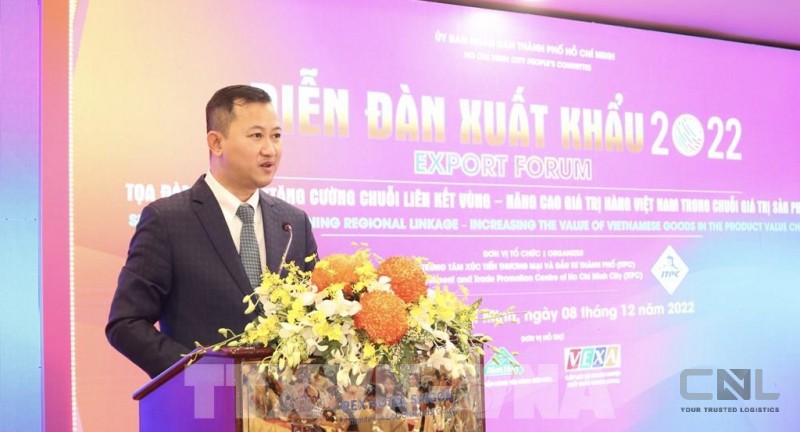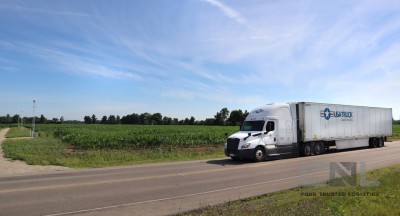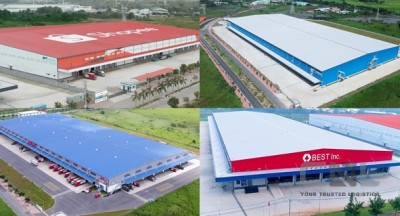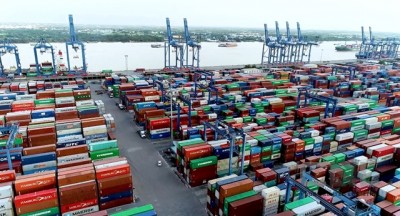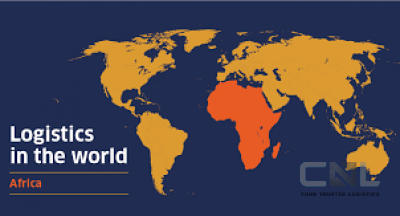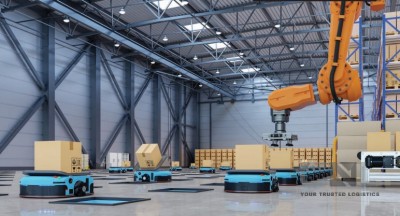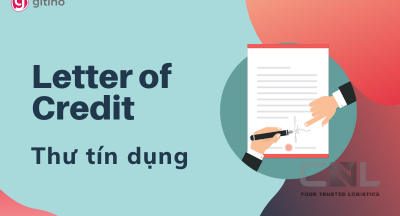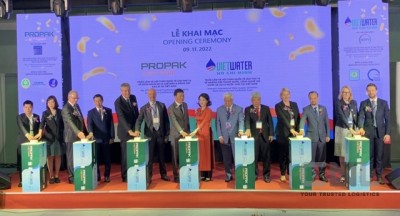Strengthening regional linkages is a solution to improve the value of Vietnamese goods in the global supply chain. This is the opinion of experts at the Seminar on strengthening regional links organized by the Ho Chi Minh City Trade and Investment Promotion Center (ITPC), afternoon 8/12.

Mr. Tran Phu Lu, Deputy Director in charge of ITPC gave the opening speech. Photo: Xuan Anh - VNA
Mr. Tran Phu Lu, Deputy Director in charge of ITPC assessed, pandemic COVID-19has changed the landscape of the global economy in recent years, causing a series of disruptions in global supply chains.
The pandemic is gradually brought under control in other countries, but the Russian-Ukrainian military conflict has caused the price of raw materials and input costs to rise, along with China's implementation of a Zero COVID policy, adding to the risks of improving supply chains.
In this context, Vietnam is gradually becoming an alternative point and playing an increasingly important role in the global supply chain. This brings development opportunities for the economy and businesses of Vietnam in general as well as Ho Chi Minh City in particular.
However, currently, the urgent issue for the development of raw material supply is how to reduce the dependence of enterprises on imported raw materials, increase the proportion of domestic raw material supply.
Analysis of limitations in the chain of production and consumption agricultural products, Ms. Ly Kim Chi, Chairwoman of the Ho Chi Minh City Food Association, said that Ho Chi Minh City is not only a concentration of manufacturing and processing enterprises, but also a large consumption market and an export hub of the whole southern region. However, currently, agricultural production in Ho Chi Minh City only meets about 20-30% of the food needs of the city's people, the rest must be imported from the provinces or through many different roads.
In contrast, the Mekong Delta, the Southeast and the Central Highlands fully converge the factors of nature, geography and humanity to connect the production value chain of the region with the consumption needs of not only Ho Chi Minh City in particular but also provinces and cities, regions and regions across the country, especially exports, participate more and more deeply in the global value chain.

*Synchronous solution needed
Mr. Nguyen Cong Luan, Deputy Head of Import and Export Management Department, Ho Chi Minh City Department of Industry and Trade said that currently, most logistics services only stop at each individual activity, there is no close connection between transportation methods, so it often causes delays, high costs such as warehousing service fees, waiting time are increased. It can be seen that the logistics service chain linking product consumption and distribution is a bottleneck, hindering the growth of the southern key economic region, requiring timely solutions.

Accordingly, it is necessary to soon have effective policy plans and models, develop logistics infrastructure systems; synchronizing the multimodal transport structure system for interregional and international connectivity; connecting a comprehensive supply chain for products in the region from production, harvesting to export customs clearance, towards optimizing logistics costs, increasing competitive advantages for products, creating sustainable output for regional products.
Ms. Ly Kim Chi said that developing large-scale raw material areas focused on the basis of sustainable links with processing and consuming enterprises is an inevitable trend of modern commodity agriculture. The most important thing to build a sustainable raw material area is that there needs to be a connection between farmers and enterprises processing and consuming products.
The linking of supply areas with processing centers will support processing enterprises to be technologically proactive in cultivation, animal husbandry and processing; forming a large sample growing area associated with the construction of planting area codes, associated with preliminary processing, processing and preservation of large capacity and modernity. Supervise and ensure quality meets standards from production to distribution, meeting market requirements, especially strict requirements from export markets. Close links will also help increase the value of agricultural and fishery products, contributing greatly to the addition and diversification of the supply chain of stable production materials for Ho Chi Minh City in the coming time, improving the competitiveness of Vietnamese enterprises.
According to Ms. Ly Kim Chi, in order to promote connectivity and linkage activities in depth, it is necessary to involve not only Ho Chi Minh City but also provinces and agencies in promoting the removal of major bottlenecks today. First, it is necessary to have a shared database system, aiming to build an efficient raw material area to meet the needs of the export market. The food processing industry proposed Ho Chi Minh City to propose the Ministry of Agriculture and Rural Development to act as a focal point for building a common database between the city and provinces; At the same time, the study has a mechanism to support Ho Chi Minh City enterprises to expand investment in developing raw material areas of enterprises in the provinces as leading enterprises in the industry.
Besides, it is necessary to promote the formation and development of cold storage chains and storage warehouses. Specifically, Ho Chi Minh City needs to arrange an appropriate land fund, can link with provinces, have support policies on land rent, loan interest, licensing process ... for cold storage projects to preserve and stockpile agricultural raw materials for deep processing for consumption and export.
Xuan Anh/VNA - bnews.vn
